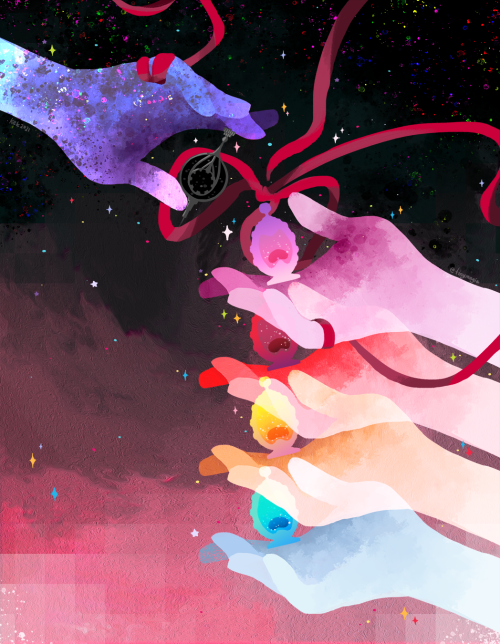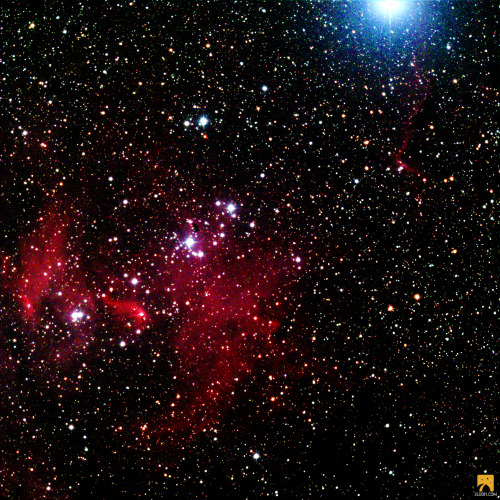My Favorite Bird - It’s So Cute!! 😍😍😍
My favorite bird - it’s so cute!! 😍😍😍

#0026 - Killdeer
We have a lady killdeer who nests in my work parking lot every year and I love her so much.
More Posts from Mystarypi and Others

despite everything, you still love madoka magica (happy 10th anniversary!!)

This is the Gabriela Mistral Nebula! 💫💫💫
Gabriela Mistral is a Chilean poet who was the first Latin American author to win a Nobel Prize in Literature. This nebula has her name because some believe that it resembles her (I honestly don’t know why 😂). Millions of years ago, a deposit of gas resulted in a surge of star formation that heats up and radiates this region today! ✨✨✨
Taken by me (Michelle Park) using the Slooh Chile Two telescope on January 13th, 2021 at 5:17 UTC.

This is the Orion Nebula! 🤩🤩🤩
It’s the closest star forming region to Earth and even visible without a telescope. In this image alone, there are almost 3000 stars! ✨✨✨
Some people think the Orion Nebula resembles a turkey - its body is the wide circular part and its head is the small circle off of the nebula. Can you see it? I hope you enjoy this stunning image for Thanksgiving! 🦃🦃🦃
Taken by me (Michelle Park) using the Slooh Canary Two telescope on November 20th, 2020 at 3:37 UTC.

This is Haley’s Coronet! 👑👑👑
The interaction between the larger spiral galaxy and its dwarf galaxy have created plumes of dust around the duo. The process of the larger galaxy eating the smaller one is actually called galactic cannibalism (spooky)! 👻👻👻
Taken by me (Michelle Park) using the Slooh Chile Two telescope on January 13th, 2021 at 3:18 UTC.

My Top Posts in 2021
#5

This is the Skull Nebula! 💀💀💀
The glow of this eerie nebula is perfect for Halloween! This planetary nebula has a binary star system with a third star orbiting it. The beautiful colors of this nebula come from the outer layers of a Sun-like star that died in an explosion! 👻👻👻
Taken by me (Michelle Park) using the Slooh Canary Three telescope on October 28th, 2021 at 1:57 UTC.
423 notes • Posted 2021-10-28 17:26:10 GMT
#4

This is the Crescent Nebula! 🌙🌙🌙
Happy Valentine’s Day! To celebrate, here is a ❤red❤ emission nebula: its color is created by energized hydrogen. This nebula was formed by a young Wolf-Rayet star blowing stellar wind and when the star became a red giant, it energized the wind! 💫💫💫
Taken by me (Michelle Park) on February 14th, 2021 at 6:51 UTC using the Slooh Canary Two telescope.
438 notes • Posted 2021-02-14 15:04:10 GMT
#3

This is Haley’s Coronet! 👑👑👑
The interaction between the larger spiral galaxy and its dwarf galaxy have created plumes of dust around the duo. The process of the larger galaxy eating the smaller one is actually called galactic cannibalism (spooky)! 👻👻👻
Taken by me (Michelle Park) using the Slooh Chile Two telescope on January 13th, 2021 at 3:18 UTC.
521 notes • Posted 2021-01-16 13:40:35 GMT
#2

This is the Cat’s Paw Nebula! 🐾🐾🐾
This nebula is glowing due to the interactions between its hot stars and large molecules known as polycyclic aromatic hydrocarbons. This makes it particularly bright in the infrared and a common target for astrophotography in the Milky Way galaxy! 🔭🔭🔭
Taken by me (Michelle Park) using the Slooh Chile Two telescope on March 7th, 2021 at 6:38 UTC.
533 notes • Posted 2021-03-08 13:07:09 GMT
#1

This is Vega! ✨✨✨
This is the brightest star in the summer constellation Lyra and the 5th brightest star in the night sky. Infrared observations have confirmed a circumstellar disk of dust around this star, similar to the Kuiper Belt around the solar system! 🌃🌃🌃
Taken by me (Michelle Park) using the Slooh Canary Two telescope on July 5th, 2021 at 22:26 UTC.
580 notes • Posted 2021-07-06 12:57:23 GMT
Get your Tumblr 2021 Year in Review →
🤩✨💖 THANK YOU ALL FOR YOUR SUPPORT! 💖✨🤩




usagi’s desk
-
hd w/ music | my shop

This is the Running Chicken Nebula! 🐤🐤🐤
This nebula’s unique name comes from the shape of its brightest region being similar to a running chicken. In the upper right corner, you can see the bright star Lambda Centauri, which gives this nebula a second name: the Lambda Centauri Nebula! 💫💫💫
Taken by me (Michelle Park) using the Slooh Canary Two telescope on February 5th, 2022 at 3:22 UTC.

This is another photo of the Jupiter Saturn Conjunction! 🪐🪐🪐
The two planets are getting closer each day! I love this picture because you can clearly see Jupiter’s 4 largest moons (Io, Europa, Ganymede, and Callisto) and a nice view of Saturn. This event is very rare - Jupiter and Saturn are the closest since the year 1623! ✨✨✨
Taken by me (Michelle Park) using the Slooh Canary Two telescope on December 20th, 2020 at 19:24 UTC.
-
 catfang12 reblogged this · 3 years ago
catfang12 reblogged this · 3 years ago -
 iron-queen liked this · 4 years ago
iron-queen liked this · 4 years ago -
 munchthatnagaraya liked this · 4 years ago
munchthatnagaraya liked this · 4 years ago -
 donatellasoul liked this · 4 years ago
donatellasoul liked this · 4 years ago -
 poohyun-blog-blog liked this · 4 years ago
poohyun-blog-blog liked this · 4 years ago -
 nenyimxx liked this · 4 years ago
nenyimxx liked this · 4 years ago -
 ibeckonheavyrains liked this · 4 years ago
ibeckonheavyrains liked this · 4 years ago -
 goldcharon liked this · 4 years ago
goldcharon liked this · 4 years ago -
 shetheed liked this · 4 years ago
shetheed liked this · 4 years ago -
 mystarypi reblogged this · 4 years ago
mystarypi reblogged this · 4 years ago -
 mystarypi reblogged this · 4 years ago
mystarypi reblogged this · 4 years ago -
 mystarypi liked this · 4 years ago
mystarypi liked this · 4 years ago -
 the-bakedfish reblogged this · 4 years ago
the-bakedfish reblogged this · 4 years ago -
 the-bakedfish liked this · 4 years ago
the-bakedfish liked this · 4 years ago -
 deerlittlefox reblogged this · 4 years ago
deerlittlefox reblogged this · 4 years ago -
 deerlittlefox liked this · 4 years ago
deerlittlefox liked this · 4 years ago -
 thewaterbirds reblogged this · 4 years ago
thewaterbirds reblogged this · 4 years ago
